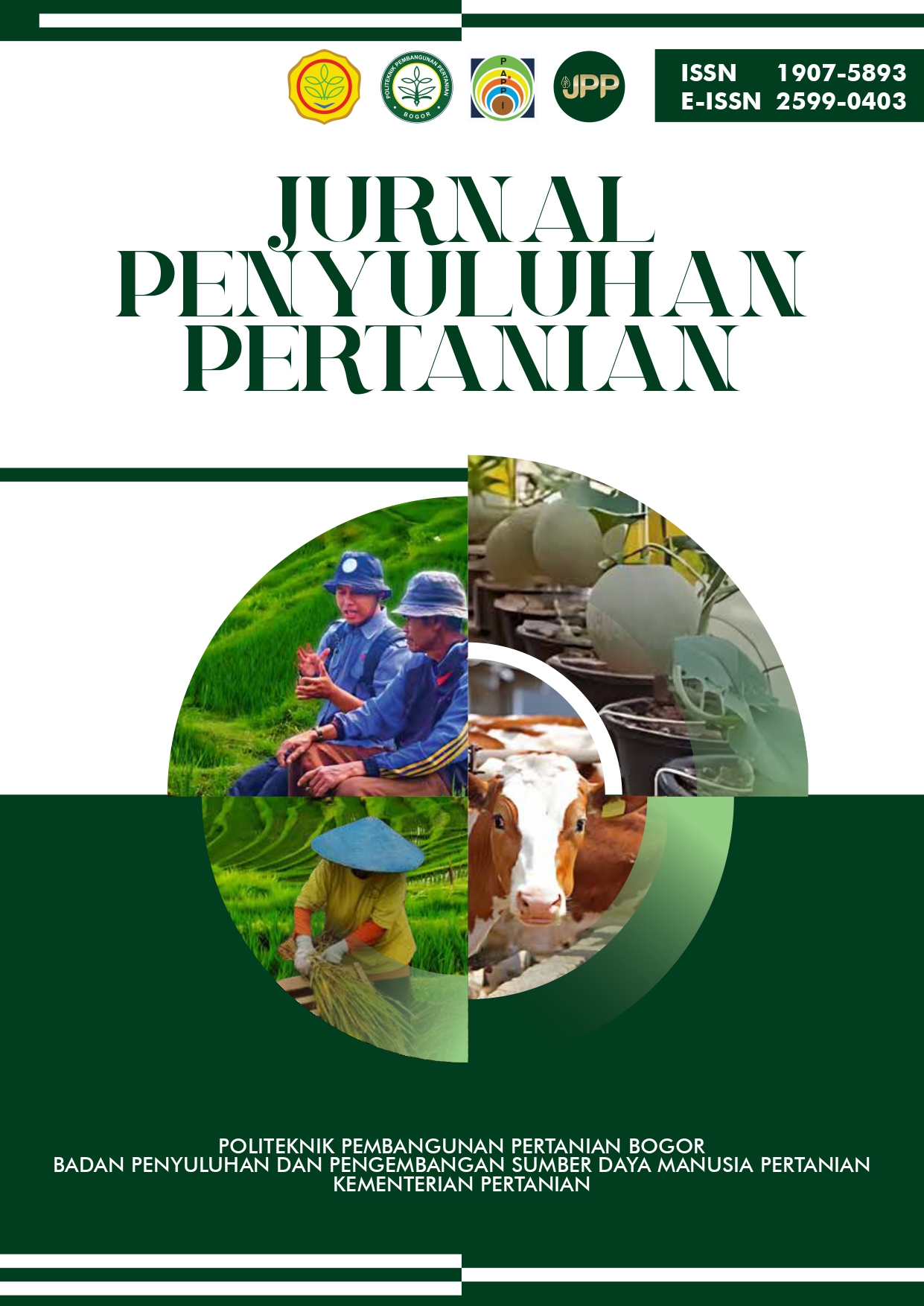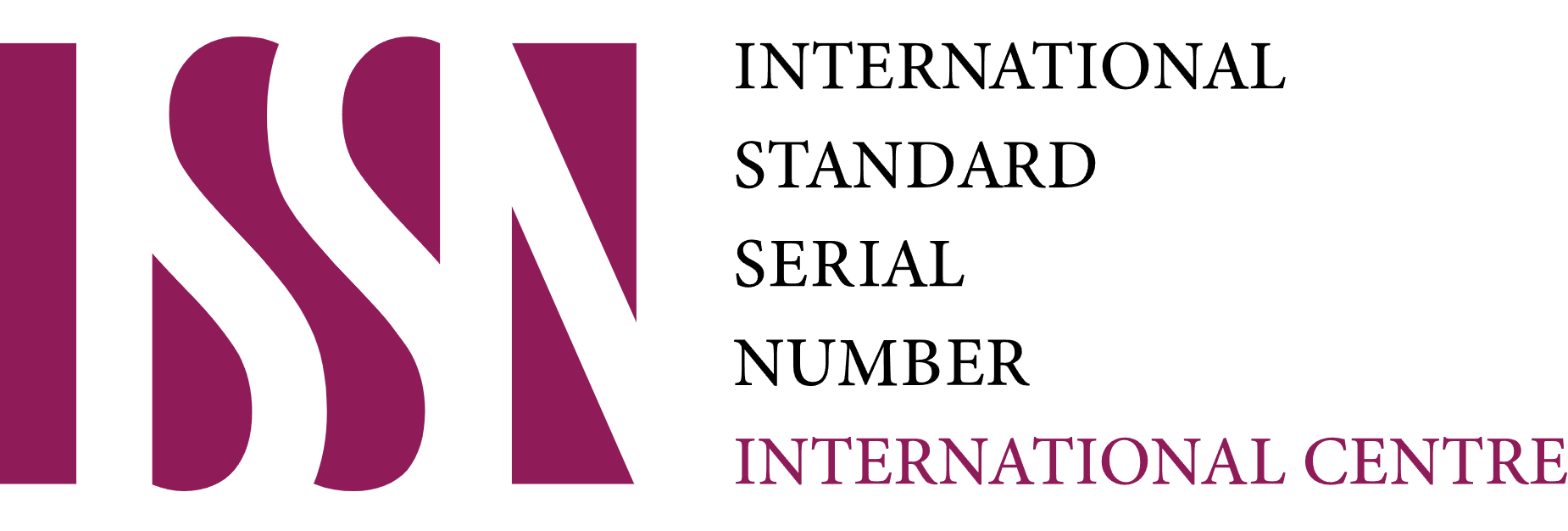Improving The Sustainability of Silage Adoption in Dairy Cattle Farming: Analysis of Determining Factors and Strategies for Increasing Farm Capacity
DOI:
https://doi.org/10.51852/7eayjd09Keywords:
crop-livestock integration system, dairy cattle productivity, innovation adoption, lokal feed silage, SEM-PLS.Abstract
One of the challenges of dairy farming is the availability of feed to meet the needs of livestock. This study aims to 1) identify the potential and problems of utilizing local feed, as well as the potential for implementing silage development; 2) analyze factors that influence the adoption of locally sourced feed innovations; 3) develop strategies for sustainable adoption and increasing the capacity of dairy farmers. This study used a participatory approach involving 47 farmers as a two-year action study (2023–2024). Data collection methods include surveys, in-depth interviews, and focus group discussions (FGDs). Data was analyzed using Structural Equation Modeling-Partial Least Square (SEM-PLS) to identify factors that influence the adoption of silage innovations. The results of the study showed that the adoption of silage technology was influenced by the characteristics of farmers, the role of extension workers, and the nature of the innovation. Although the potential for local feed is abundant, its utilization is still low due to limited knowledge of farmers and processing infrastructure. The structural model test showed a significant relationship between silage adoption and increased milk productivity (coefficient 0.508; p = 0.008). This study recommends strengthening the institution of livestock farmers through the People's Livestock School (SPR), continuous training, and integration of crop-livestock systems (SITT) to optimize local resources. The proposed design model includes silage-based feed diversification, utilization of agricultural waste, and partnerships with agribusiness actors. This study provides a reference for sustainable agricultural policies and the development of technological innovations that are adaptive to the characteristics of smallholder farmers.
References
[BPS] Badan Pusat Statistik. (2024). Perkembangan Populasi Ternak di Kabupaten Bogor, 2021-2023. https://bogorkab.bps.go.id/id/statistics-table/1/OTMjMQ==/perkembangan-populasi-ternak-di-kabupaten-bogor--2021-2023.html
Abdullah, A. (2016). Proses Adopsi Teknologi Fermentasi Jerami Padi Sebagai Pakan Sapi Potong Pada Peternakan Rakyat di Kabupaten Bulukumba, Sulawesi Selatan. Sosiohumaniora, 18(1), 1–9.
Amam, A., & Harsita, P. A. (2019a). Pengembangan Usaha Ternak Sapi Perah : Evaluasi Konteks Kerentanan Dan Dinamika Kelompok. Jurnal Ilmiah Ilmu-Ilmu Peternakan, 22(1), 23–34. https://doi.org/10.22437/jiiip.v22i1.7831
Amam, A., & Harsita, P. A. (2019b). Tiga Pilar Usaha Ternak : Breeding, Feeding, and Management. Jurnal Sain Peternakan Indonesia, 14(4), 431–439. https://doi.org/10.31186/jspi.id.14.4.431-439
Amin, M., Hasan, S. D., Yanuarianto, O., Iqbal, M., & Karda, I. W. (2019). Peningkatan Kualitas Jerami Padi MenggunakanTeknologi Amoniasi Fermentasi. Jurnal Ilmu Dan Teknologi Peternakan Indonesia (JITPI) Indonesian Journal of Animal Science and Technology), 2(1), 96–103. https://doi.org/10.29303/jitpi.v2i1.18
Arsyad, S. (2010). Konservasi Tanah dan Air. IPB Press.
Arumapperuma, S. (2006). Agricultural Innovation System In Australia. Journal of Business Systems, Governance and Ethics, 1(4), 15–26. https://doi.org/10.15209/jbsge.v1i4.88
Baba, S., Syarif, I., & Sohrah, S. (2021). Faktor-faktor yang memengaruhi adopsi pemanfaatan limbah pertanian sebagai pakan pada peternak sapi perah di Kabupaten Enrekang. Livestock and Animal Research, 19(2), 178. https://doi.org/10.20961/lar.v19i2.46815
Burhanuddin, B., Pambudy, R., & Wahyudi, A. F. (2019). Analisis Karakteristik Kewirausahaan Dan Adopsi Inovasi Petani Kopi Di Provinsi Lampung. Jurnal Agribisnis Indonesia, 6(2), 73. https://doi.org/10.29244/jai.2018.6.2.73-84
Chin, W. . (1998). The Partial Least Squares Approach for Structural Equation Modeling. Dalam Marcoulides, G.A. Modern Methods for Business Research. Lawrence Erlabaum.
Fatchiya, A., Amanah, S., & Kusumastuti, Y. I. (2016). Penerapan Inovasi Teknologi Pertanian dan Hubungannya dengan Ketahanan Pangan Rumah Tangga Petani. Jurnal Penyuluhan, 12(2), 190. https://doi.org/10.25015/penyuluhan.v12i2.12988
Firmansyah, A. (2015). Pengembangan Usaha Peternakan Berbasis Kelompok Tani. Jurnal Peternakan Indonesia, 17(2), 123–135.
Hertanto, A., Al kurnia, D., & Susanto, E. (2018). Penerapan Teknologi Silase “Fast-Ferment” Di Peternak Kambing Lokal Kabupaten Lamongan. Jurnal Ternak, 9(1), 23. https://doi.org/10.30736/ternak.v9i1.28
Heryanto, M. A., Sukayat, Y., & Supyandi, D. (2016). Model behaviour of farmers in the adoption of rice organic farming system : paradox of socio - economic - environmental. Sosiohumaniora, 18(2), 159–165.
Intiaz, L. F., Subhan, P. A., & Prayoga, K. (2022). Tingkat Adopsi Inovasi Teknologi Combine Harvester di Kelompok Tani Balong 01 Desa Tanjungbaru. Forum Agribisnis, 12(2), 113–125. https://doi.org/https://doi.org/10.29244/fagb.12.2.113-125
Irawan, Dariah, A., & Rachman, A. (2015). Pengembangan dan diseminasi inovasi teknologi pertanian mendukung optimalisasi pengelolaan lahan kering masam. Jurnal Sumberdaya Lahan, 9(1), 37–50. https://media.neliti.com/media/publications/133861-ID-pengembangan-dan-diseminasi-inovasi-tekn.pdf
Latan, H., & Ghozali, I. (2012). Partial Least Square : Konsep, Teknik dan Aplikasi Smart PLS 2.0 M3. Badan Penerbit Universitas Diponegoro.
Magrianti, T., Priyono, & Priyanto, D. (2019). Analysis Forage Provision Pattern and Development Strategy at Dairy Cattle Development Area in Central Java.Prosiding Seminar Nasional Teknologi Peternakan dan Veteriner 2019, 110 - 122. DOI: http://dx.doi.org/10.14334/Pros.Semnas.TPV-2019-p.110-122
Mardikanto, T. (1988). Komunikasi Pembangunan. UNS Press.
Mardikanto, T. (1996). Penyuluhan Pembangunan Kehutanan. Departemen Kehutanan.
Minh, T. T., Neef, A., & Hoffmann, V. (2011). Agricultural Knowledge Transfer and Innovation Processes in Vietnam’s Northwestern Uplands: State-governed or Demand-driven? Southeast Asian Studies, 48(4), 425–455
Mulyandari, R. S. H. (2011). Cyber Extension Sebagai Media Komunikasi Dalam Pemberdayaan Petani Sayuran. IPB.
N Saking, & N Qomariyah. (2017). Identifikasi Hijauan Makanan Ternak (HMT) Lokal Mendukung Produktivitas Sapi Potong di Sulawesi Selatan (The Identification of Lokal Forages to Support the Productivity of Beef Cattle in South Sulawesi). Prosiding Seminar Nasional Teknologi Peternakan Dan Veteriner 2017, 558–565. http://dx.doi.org/10.14334/Pros.Semnas.TPV-2017-p.558-565
Nurhayati. (2011). Faktor-Faktor Efektivitas Komunikasi di Dalam SL-PTT Padi (Kasus SL-PTT Padi Desa Cikarawang, Bogor Barat. Kabupaten Bogor). Sekolah Pascasarjana IPB.
Ohmomo, S., Tanaka, O., Kitamoto, H. K., & Cai, Y. (2002). Silage and microbial performance, old story but new problems. Japan Agricultural Research Quarterly, 36(2), 59–71. https://doi.org/10.6090/jarq.36.59
Padmowihardjo, S. (2000). Metode Penyuluhan Pertanian. Universitas Terbuka.
Pramono, D., Herianti, I., & Sejati, G.(2020). Penyediaan Pakan konsentrat Berbahan Baku Lokal Sebagai Pengungkit Sistem Pertanian Bioindustri Berbasis Sapi Perah. Prosiding Seminar Nasional Kesiapan Sumber Daya Pertanian dan Inovasi Spesifik Lokasi Memasuki Era Industri 4.0, 135 - 141. https://repository.pertanian.go.id/handle/123456789/9170
Ridwan, R., & Widyastuti, Y. (2001). Membuat Silase: Upaya Mengawetkan dan Mempertahankan Nilai Nutrisi Hijauan Pakan Ternak. Warta Biotek LIPI, 15(1), 9–14.
Rogers, E. M. (1994). Diffusion of Innovation. Free Press.
Rogers, E. M. (2003). Diffusion of Innovations Fifth Edition. Free Press.
Santoso, B., Maunatin, A., Hariadi, B., & Abubakar, H. (2013). Isolasi dan Identifikasi Bakteri Asam Laktat Asal Rumput Raja (Pennisetum purpureophoides) sebagai Kandidat Probiotik pada Ternak. Jitv, 18(2), 131–137.
Sari, A., Liman, & Muhtarudin. (2016). Potensi Daya Dukung Limbag Tanaman Palawija Sebagai Pakan Ternak Ruminansia di Kabupaten Pringsewu. Jurnal Ilmiah Peternakan Terpadu, 4(2), 100–107.
Soeharsono, & Sudaryanto, B. (2006). Tebon Jagung Sebagai Sumber Hijauan Pakan Ternak Strategis Di Lahan Kering Kabupaten Gunung Kidul. Prosiding. Lokakarya Nasional Jejaring Pengembangan Sistem Integrasi Jagung – sapi. Puslitbang Peternakan.
Soeparno. (2012). Peternakan Rakyat: Strategi Pengembangan dan Pemberdayaan. Penebar Swadaya.
Solimun. (2002). Multivariate Analysis Structural Equation Modelling (SEM) Lisrel dan Amos. Fakusta MIPA Universitas Brawijaya.
Suhendra, D., T. Anggiati, G., Sarah, S., F. Nasrullah, A., Thimoty, A., & W. C. Utama, D. (2015). Tampilan kualitas susu sapi perah akibat imbangan konsentrat dan hijauan yang berbeda. Jurnal Ilmu-Ilmu Peternakan, 25(1), 42–46. https://doi.org/10.21776/ub.jiip.2015.025.01.06
Suningsih, N., & Ibrahim, W. (2018). Kualitas nutrisi amoniasi dan jerami padi (Oryza sativa) fermentasi pada berbagai penambahan starter. Prosiding Seminar Nasional Fakultas Pertanian Universitas Jambi Tahun 2018 Tema: Pembangunan Pertanian Berkelanjutan Berbasis Sumberdaya Lokal, 661–673.
Tolba, A., & Mourad, M. (2011). Individual and cultural factors affecting diffusion of innovation. Journal of International Business and Cultural …, 1–17. http://w.aabri.com/manuscripts/11806.pdf
Utomo, R., Agus, A., Noviandi, C. T., Astuti, A., & Alimon, A. R. (2020). Bahan Pakan Dan Formulasi Ransum. In Universitas Gajah Mada. https://www.researchgate.net/publication/366164808
Van Houtert, M. (1981). Some Aspects of Rice Straw as Ruminants Feed in Asia. Agric. College Deventer.
Weimer, P. J., D.R. Mertens, E., Ponnampalam, B. F., Severin, & Dale, B. E. (2003). FIBEXtreated rice straw as a feed ingredient for lactating dairy cows. Anim. Feed Sci. Technol.
Weir, S., & Knight, J. (2000). Adopiton and diffusion of agricultural innovation in Ethiopia: The role of education. Journal of Economic Literature.
Werdhany, W. I., & Gunawan, G. (2017). Prospek Pengembangan Usaha Ternak Kambing dalam Usaha Tani Kakao di Desa Banjarharjo dan Banjaroya, Kalibawang, Kulon Progo. Prosiding Seminar Nasional Teknologi Peternakan Dan Veteriner 2017, 377–384. https://doi.org/10.14334/pros.semnas.tpv-2017-p.379-386
Widiyanti, N., Suhartati, E., & Setiawan, A. (2018). Pengembangan Pakan Alternatif untuk Sapi Perah. Jurnal Ilmu Ternak, 18(1), 45–52.
Downloads
Published
Issue
Section
License
Copyright (c) 2025 Politeknik Pembangunan Pertanian Bogor

This work is licensed under a Creative Commons Attribution-NonCommercial-ShareAlike 4.0 International License.
Authors who publish with this journal agree to the following terms:
1. Copyright on any article is retained by the author(s).
2. The author grants the journal, right of first publication with the work simultaneously licensed under a Creative Commons Attribution License that allows others to share the work with an acknowledgment of the works authorship and initial publication in this journal.
3. Authors are able to enter into separate, additional contractual arrangements for the non-exclusive distribution of the journals published version of the work (e.g., post it to an institutional repository or publish it in a book), with an acknowledgment of its initial publication in this journal.
4. Authors are permitted and encouraged to post their work online (e.g., in institutional repositories or on their website) prior to and during the submission process, as it can lead to productive exchanges, as well as earlier and greater citation of published work.
5. The article and any associated published material is distributed under the Creative Commons Attribution-ShareAlike 4.0 International License













